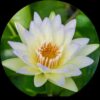- Empty cart.
- Continue Shopping
Water Poppy Flower
₹120.00Current price is: ₹120.00. Original price was: ₹250.00.
Genus : Hydrocleys
“Elevate your aquatic garden with the enchanting Water Poppy Aquatic Plants. Known for their graceful and blooming beauty, these plants will add a touch of elegance to your water feature. Create a serene and captivating atmosphere at home.”
Add to cart
The water poppy, scientifically known as Hydrocleys nymphoides, is an aquatic plant that belongs to the family Alismataceae. It is also commonly referred to as the yellow water poppy or the water snowflake. This plant is native to tropical and subtropical regions and is known for its attractive yellow flowers and floating leaves.
Here are some key features and characteristics of the water poppy plant:
1. Appearance: The water poppy is a perennial herbaceous plant that grows in water bodies such as ponds, lakes, and slow-moving streams. It typically forms dense colonies of floating leaves and flowers. The plant has thick, fleshy roots that anchor it to the bottom of the water body.
2. Leaves: The leaves of the water poppy are glossy and heart-shaped, with a vibrant green color. They float on the water surface and are supported by long, slender stems. The leaves can reach a size of 5 to 10 centimeters (2 to 4 inches) in diameter.
3. Flowers: The most distinctive feature of the water poppy is its bright yellow flowers. The flowers are cup-shaped and have five petals. They emerge on long stalks above the water, standing above the floating leaves. The blooms usually last for a single day but are continuously produced throughout the blooming season.
4. Blooming season: The water poppy typically flowers during the summer and early autumn months. The exact timing may vary depending on the specific climate and growing conditions.
5. Habitat: Water poppies thrive in warm, sunny locations with calm or slow-moving freshwater. They prefer shallow water depths of up to 50 centimeters (20 inches). These plants are often found in natural wetlands or can be cultivated in garden ponds and water features.
6. Growth and spread: Water poppies are considered vigorous growers, and under favorable conditions, they can quickly form dense mats of vegetation. This growth habit makes them useful for providing shade and shelter to aquatic organisms while also helping to control excessive algae growth.
7. Cultural significance: Water poppies are often grown as ornamental plants in water gardens and ponds due to their attractive flowers and foliage. They add a vibrant splash of color and can create a visually appealing display. However, it is important to note that water poppies can become invasive in some regions if not properly managed, as their rapid growth can outcompete native aquatic plants.
8. Maintenance: Water poppies require full sun exposure to thrive and prefer nutrient-rich water. Regular fertilization can help promote healthy growth and abundant flowering. If grown in containers, the plants should be placed in water with a depth of a few centimeters (an inch or two) above the crown. They can also be divided and repotted as needed to control their spread.
It’s worth noting that while the water poppy can be an attractive addition to aquatic environments, it’s important to check with local authorities or consult invasive species lists to ensure that it is not considered invasive in your specific area.
Add a review
Currently, we are not accepting new reviews













Reviews
There are no reviews yet